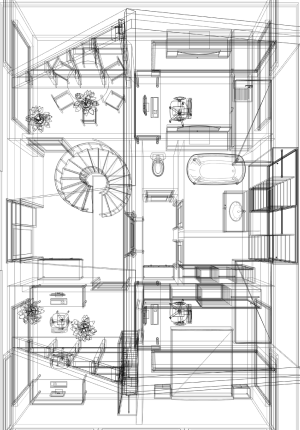How Your Attic Affects Your Home
For most people, the attic is just considered as extra storage space, that place where you can store the Christmas decorations you have to bring out once a year, or where you keep old toys from your children’s younger years. However, your attic actually plays an important part in your home’s energy efficiency. Issues like air leaks and poor ventilation can cause mold, higher electric bills, and uncomfortable temperatures. Luckily with the better technology and practices we have today, it’s possible to design an attic that can actually help your home’s comfort and efficiency rather than hurt it.
Your Typical Attic
The attic type we’re all fairly accustomed to is the vented one. The vents allow airflow to move hot air and moisture out of the attic. It has been the go-to option of many homeowners for generations, but the most avoided space in the house when summer heat comes knocking on their roofs. Outside air keeps coming in, while the conditioned air from the inside escapes out through any leaks in the ceiling. Imagine a swimming pool with holes at the bottom – no matter how much water is pumped in, the water is not going to stay and you will have to keep paying to fill it. In the winter, the conditions reverse to where there is a loss of heat through the roof and drafts enter the house from foundational openings. To make matters worse, duct systems are usually placed in these vented attics, where it ends up being baked in the summer heat. So that cool air that just came from the air handler is already being warmed up before it even gets to your room, which hurts the efficiency of the whole HVAC system.
The insulation in a vented attic is placed on the attic floor. This is meant to keep the conditioned space inside the house insulated, but doesn’t do anything to help insulate the attic itself. Many vented attics can end up being hotter than the outside temperature in the summer. But there is an alternative, attic encapsulation.
The Interior Climate Zone
Basically, attic encapsulation acts like the earth’s ozone layer. It helps expand the home’s thermal envelope, controls the internal temperature, and protects the property from extreme outside temperatures. Instead of the floor, insulation is installed along the attic roof.
Attic encapsulation helps lower the overall heat load on the house. Even though the attic is not directly conditioned, by placing the insulation layer along the roof deck, it reduces heat transfer to the attic, reducing the amount that the attic temperature is increased. This system also ensures that the attic is air sealed which provides a whole lot of benefits to the efficiency of the HVAC system. The reduction of air leaks enables the following:
- A more even and comfortable temperature throughout the house because there is less humidity or heat transfer from the attic to the rest of the house.
- Protection for HVAC equipment from extreme heat or cold conditions, decreased running time for the HVAC which avoids overuse, and reduced heat transfer from the attic to the ductwork.
- An energy-efficient home with air conditioning costs cut down by at least 15% which is equivalent to hundreds of dollars in electric bills.
- A more temperature-controlled space for storage or a livable space.
So, where do I begin?
If your house was already built with an encapsulated attic, great! If not, one of the first things you’ll want to do is have a Manual J load calculation completed by an HVAC professional. With the load calculation they will find out how much, exactly, will encapsulating the attic reduce the heat load on your house. In some cases, it could even mean that your home doesn’t need as large of an air conditioner as you thought. It’s a great idea to consider attic encapsulation as part of other renovations as well, such as installing new, more energy-efficient windows, or making other changes to your home that could affect the heat load. The smaller the system needed, the more energy and money saved in the long run.
The next step can be initiated by technicians through the use of any type of construction insulation such as spray foam insulation or rigid foam, foam board, or cellulose insulation.
This whole process will help make your house more energy-efficient, helping keep it more comfortable and saving money. It may cost a little bit more upfront, but a properly functioning attic supported by a well-calculated design helps you save a lot down the road.
If you’d like to see some visuals on this topic, watch this video on YouTube: Vented vs Encapsulated Attics. You can also see in the video a sample Manual J report between vented and an encapsulated one. If you have any questions or want to talk about possible solutions for your home, send us an email at tom@procalcs.net.


